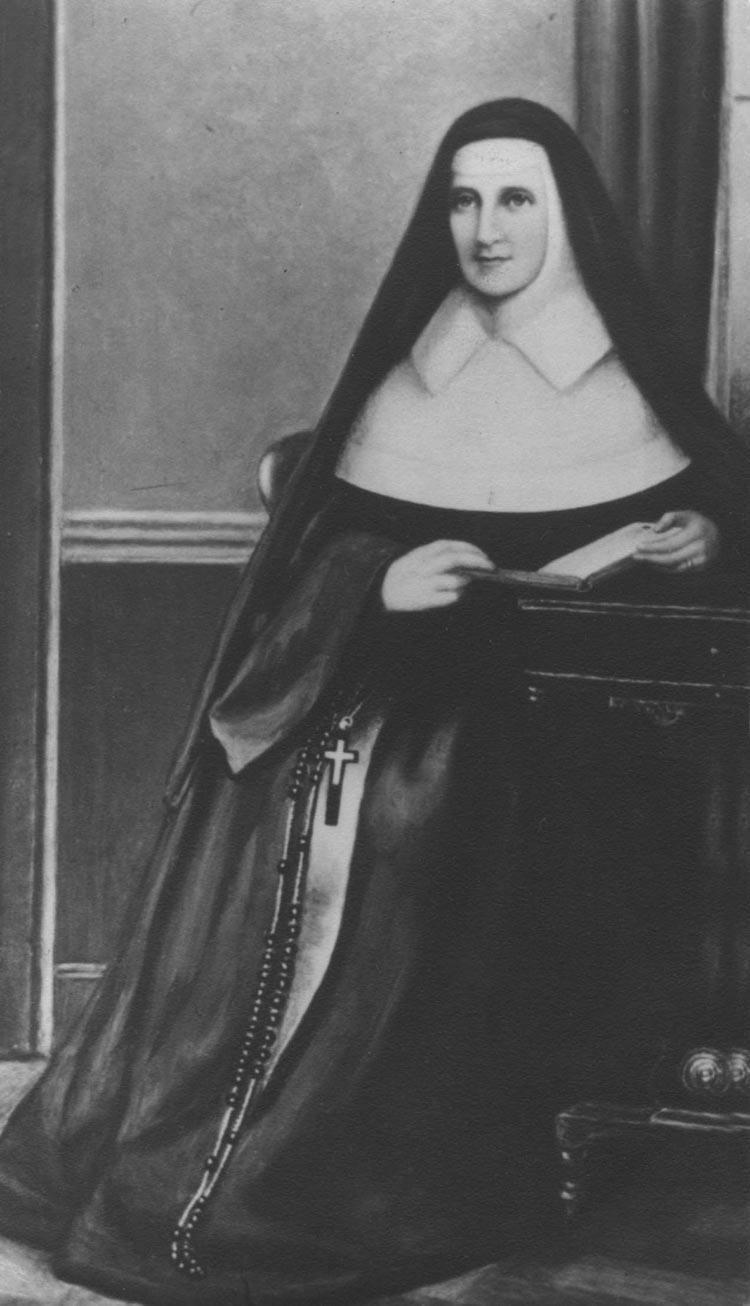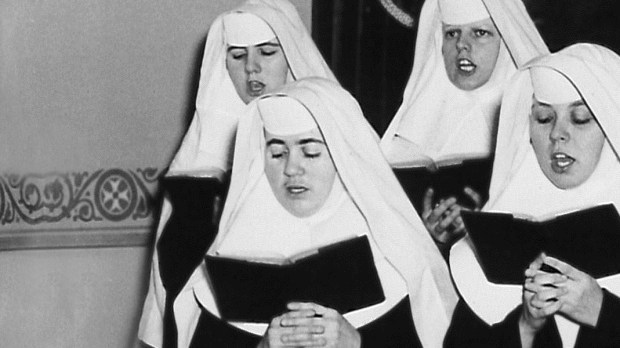“God knows I would rather be cold and hungry than that His poor should suffer want.” — Venerable Catherine McAuley (1778-1841)
In 1820s Dublin, Catherine McAuley, a wealthy heiress, opened a home for poor women and homeless girls on Baggot Street. It opened on September 24, the Feast of Our Lady of Mercy. Catherine gathered a group of like-minded laywomen to meet the day’s pressing needs: poverty, sickness, and illiteracy. They formed the nucleus of a new religious community, the Sisters of Mercy, which formally began in 1831.

Most Irish convents at the time were contemplative. The Sisters of Mercy were unique in extending their work to society’s “least”: the poor and elderly, the uneducated and sick, the imprisoned. Besides the vows of poverty, chastity and obedience that all religious take, they take a fourth vow of service to “the poor, sick and ignorant.” It was said that their cloister was “the alley of the poor.”
“Mercy spirituality” flows from Catherine’s love of Christ as mercy, whose love is manifested in works of mercy. For Catherine, mercy was “the principal path pointed out by Jesus Christ to those who are desirous of following Him.” Her charism, Sister Kathleen Healy writes, “is expressed in prayer and service for the poor.”
In Ireland, the sisters taught and cared for the disadvantaged. During a cholera epidemic, they tended the dying “while friends and neighbors fled in terror.” During the Famine, they traveled into city alleys and rural huts with food and medicine. They consoled “the sad-hearted father, the weeping mother, the hungry child.” For Catherine, there was no such thing as undeserving poor: “It is better to relieve one hundred imposters, if there be such, than to suffer one deserving person to be sent away empty.”
In 1843, Mother Frances Xavier Warde brought six sisters to America. Warde, who founded nearly one hundred American convents, was described as having “all the majesty of three Queen Victorias.” They settled in Pittsburgh, where they initially faced prejudice. They opened a school, an orphanage, and the first of many hospitals. In 1848, during a typhoid fever epidemic, many sisters died, but their witness killed local hostility.
From there they moved throughout the country, wherever they were invited. They served in the Civil War as nurses, through epidemics of every kind, through floods and earthquakes. Sister Kathleen Healy writes: “They traveled in every way available — from stagecoach to Conestoga wagon — establishing schools, homes, orphanages, hospitals, where none existed. Comfortable living did not exist for them.”
What did they do? They taught school, nursed the sick, ran orphanages and hospitals, residences for women and the aged, vocational training schools, and nurseries. In 1850s San Francisco, they ministered to cholera victims. A local newspaper commented:
They did not stop to enquire whether the poor sufferers were Protestants or Catholics, Americans or foreigners, but with the noblest devotion applied themselves to their relief. One Sister might be seen bathing the limbs of the sufferer; another chafing the extremities; a third applying the remedies; while others with pitying faces were calming . . . the dying. The idea of danger never seems to have occurred to these exceptional women; self was lost sight of.
They ransomed slaves in the South when they could, and they worked with Native Americans in New England and elsewhere. One sister wrote: “What matter if the flesh be white or black or brown? The dying Savior wore for all the thorny crown.”
One historian notes that starting new foundations out West “were little in comparison with those of breaking a path in Puritan New England.” Providence, Rhode Island, in the 1850s was a hotbed of anti-Catholicism, and mobs threatened to burn down a Mercy convent, but Irish immigrants prevented them from carrying out their plans. In time, Mercy schools became a standard feature of Rhode Island Catholicism.
In New Hampshire, they were the first Catholic nuns ever seen. Many Protestants believed that convents were prisons where young women were held against their will by lecherous clerics. On Saturdays, Sister Gonzaga O’Brien conducted convent tours for locals expecting dungeons, torture rooms and underground tunnels. (Some visitors, in hushed voices, promised to aid her escape.) The sisters were among the state’s first female teachers, social workers, nurses and hospital administrators.
In Baltimore, it was said of Sister Camillus Byrne, who worked there for nearly 30 years:
There was not an urchin in any lane or alley for miles around the convent, not a convict in the Penitentiary, or an outcast in the House of Correction, who did not know Sister Camillus . . . The number of lives she reformed through her instrumentality, of conversions effected by her zeal, and of souls led to embrace the faith by her instructions, is known only to God.
The sisters meant business. Mother Patricia Waldron, who worked for decades in Philadelphia, told her sisters: “We came here to serve the poor and the sick and the ignorant.” In New York harbor, Mother Agnes O’Connor took immigrant girls directly from the ships, trained them and placed them in jobs. “Of these,” it was said, “she saved thousands.”
They were also among the very first women active in prison ministry. One prisoner at Sing-Sing said of them:
Here are the questions they ask us:
“How long have you been here?” Never, “What crime did you commit?”
“Have you mother, sister, wife or children?”
“Are they destitute?”
“What can we do to help them?”
The work affected the sisters deeply. In San Francisco, Mother Baptist Russell, a formidable woman in her own right, was said to “shed bitter tears … at the thought of the wretchedness she had witnessed and the little she could do to relieve it.”
They made a difference. Within a century of Catherine McAuley’s death, her sisters formed the largest English-speaking women’s religious community, the majority in America. Today the Mercy charism is alive and well in their schools and colleges, in their hospitals and healthcare institutions, and most of all in their commitment to God’s least, wherever they are found.
Pat McNamara is a Catholic historian and the author of New York Catholics: Faith, Attitude, & the Works. This piece first appeared online in 2011, and is reprinted here with his permission.

